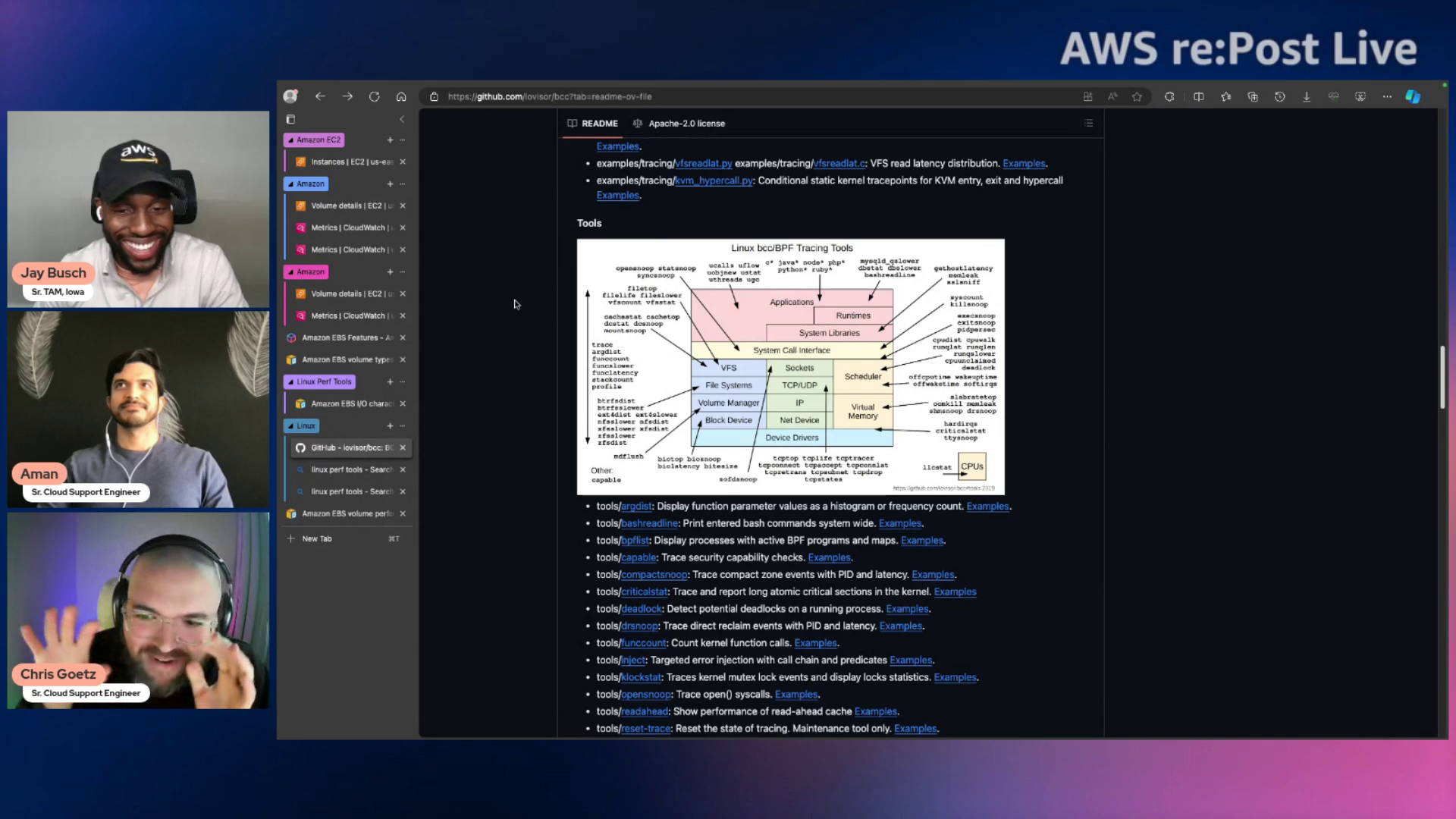Submit your Storage on AWS questions for our next AWS re:Post Live show on March 25th!
Note: This episode aired on March 25th. You can watch the recording on demand by clicking here or on the image at the bottom of this article.
Welcome to our AWS re:Post Live re:Quest Article for our upcoming show scheduled for Monday, March 25th at 11 am PST / 2 pm EST! On this episode, join Sr. Technical Account Manager Jay Busch, Sr. Cloud Support Engineer Chris Goetz, and Sr. Cloud Support Engineer Aman Ghataoda answer your questions and discuss Using Amazon Elastic Block Store Optimally. Please add a question in the comment section below for our speakers to address live on twitch.tv/aws during the live show. If your question is selected you will be awarded 5 re:Post points! If another user has asked a question that you would also like to see answered, give them an upvote and we'll address each question based on interest.
Amazon Elastic Block Store (Amazon EBS) is an easy-to-use, scalable, high-performance block-storage service designed for Amazon Elastic Compute Cloud (Amazon EC2). Block storage is technology that controls data storage and storage devices. It takes any data, like a file or database entry, and divides it into blocks of equal sizes. The block storage system then stores the data block on underlying physical storage in a manner that is optimized for fast access and retrieval. Developers prefer block storage for applications that require efficient, fast, and reliable data access. Think of block storage as a more direct pipeline to the data. By contrast, file storage has an extra layer consisting of a file system (NFS, SMB) to process before accessing the data.

 AWS OFFICIALUpdated 8 months ago
AWS OFFICIALUpdated 8 months ago AWS OFFICIALUpdated 2 years ago
AWS OFFICIALUpdated 2 years ago AWS OFFICIALUpdated 9 months ago
AWS OFFICIALUpdated 9 months ago AWS OFFICIALUpdated 2 years ago
AWS OFFICIALUpdated 2 years ago


